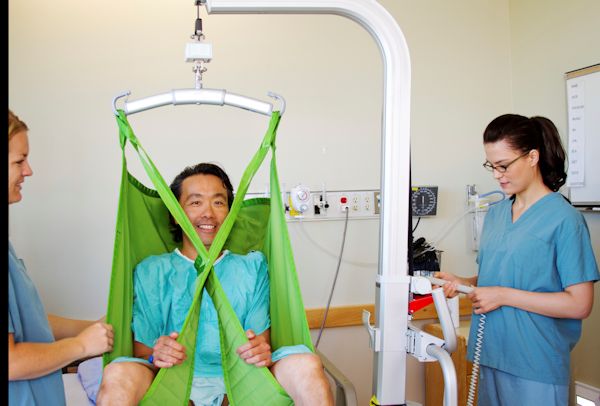Hazard Types
Ergonomic Hazards
In healthcare and hospitals, injuries often result from lifting and moving people or heavy objects, or from excessive bending, twisting, or reaching. Examples of this kind of work are transferring a patient from bed to chair, helping a patient who has fallen, and handling trolleys and wheelchairs. Tasks like these may involve hazardous manual handling, which can lead to musculoskeletal disorders (MSDs) like sprains and strains to the back and shoulders.
Sometimes patients are totally dependent on staff members to provide activities, such as dressing, bathing, feeding, and toileting while they are in the hospital. Each of these activities involve multiple interactions with handling or transferring of patients/residents and could result in employee injuries. Employee injuries lead to increased injury costs, higher turnover rates, increased sick/injured days, and staffing shortages.
It is important to effectively identify and address employee exposure to work-related MSDs from ergonomic stressors in a facility's safety and health program.
For more information on preventing ergonomic injuries in healthcare, see OSHAcademy course 623 Healthcare Preventing Ergonomic Injuries.
Knowledge Check Choose the best answer for the question.
2-1. An important prevention to ergonomic injuries in a healthcare setting is _____.
You forgot to answer the question!

